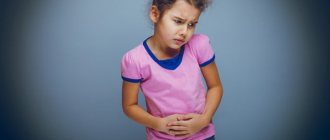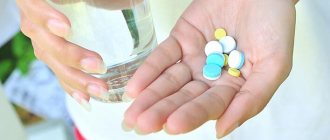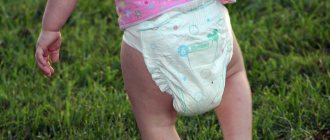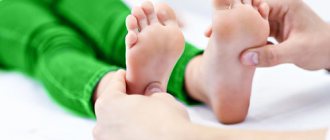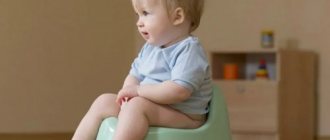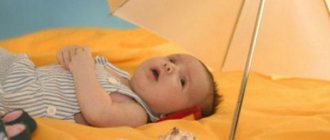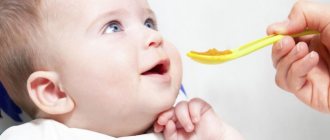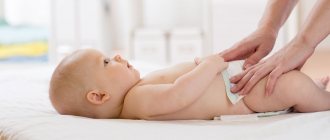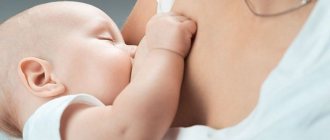Diarrhea occurs frequently in childhood. There are several reasons for this. First of all, this is due to the fact that the digestive tract is not fully mature, and not enough enzymes are synthesized. In addition, for complete digestion of food, there must be a certain microflora in the intestines, but the baby does not yet have it.
The baby’s immunity is not sufficiently developed to resist pathogenic agents that can cause bowel disorders. Diarrhea in a child can occur as a result of stress, eating new foods, overeating, or changing the feeding regimen. But there may be more serious reasons that, if left untreated, lead to consequences.
Depending on the frequency of bowel movements, the color of the stool and its consistency, as well as the presence of inclusions (mucus, blood), the doctor may assume the presence of a certain pathology. If white diarrhea appears in a child, then you should not make a diagnosis yourself, but should consult a pediatrician.
Only after collecting anamnesis and taking tests will the doctor make the correct diagnosis. The occurrence of abnormal white diarrhea in children occurs quite rarely and, as a rule, these are children under the age of one year.
Frequent bowel movements are considered if bowel movements are more frequent than three times a day.
Causes of diarrhea in a child
Physiological factors
Frequent loose bowel movements caused by damage to the gastrointestinal tract should not be confused with normal feces of the newborn and infancy period.
Babies have pasty or loose stools with a slight sour odor if they are breastfed, and firmer, more viscous stools when formula-fed. The physiological frequency of bowel movements in newborns is up to 8 times a day, which does not belong to the concept of “diarrhea.” Short-term diarrhea occurs when there are errors in the diet - the immediate consumption of large amounts of sweets, fatty or unhealthy foods. Infants experience stomach upset when switching to another formula or when introducing complementary foods. The symptom goes away in a couple of days and is not accompanied by a general deterioration in health. Sometimes diarrhea in a child begins under severe stress, but after eliminating the provoking factor, it immediately disappears.
Intestinal infections
This is the most common cause of bowel problems in children, which is detected in all age groups, but poses the greatest threat to children under 5 years of age. Infectious diarrhea is characterized by an acute, sudden onset and the presence of other signs of poisoning - nausea and vomiting, pain in the abdominal cavity, rumbling and flatulence. According to the etiological principle, intestinal infections are divided into the following groups:
- Viral
. Rotaviruses, noroviruses, and enteroviruses are the main causes of diarrhea in pediatric practice. They cause loose stools, in which mucus is noticeable, with a frequency of up to 15-20 times per day. Sometimes during defecation, watery discharge with a fecal odor is observed, which indicates a severe secretory form of diarrhea. - Bacterial
. With salmonellosis, liquid, foul-smelling green stool is released; with escherichiosis, bright yellow or orange stools are produced; with shigellosis, defecation occurs with a meager volume of mucus mixed with blood, like “rectal spitting.” Cholera is characterized by watery, rice-water-like stools. - Protozoans
. Pediatricians periodically encounter giardiasis, which occurs as typical enteritis or enterocolitis. Less commonly, children develop amebiasis, for which diarrhea “raspberry jelly” is pathognomonic - mucous feces with a large number of blood streaks.
Diarrhea in a child
Food allergies
Allergic enterocolitis in children is manifested by liquid, mucous stool, which may contain food particles. In severe cases of the disease, blood appears in the stool. The intensity of the symptom depends on the amount of allergen eaten and the type of hypersensitivity reaction - diarrhea can occur within a few hours to several days after consuming the allergen. It is associated with respiratory and skin symptoms.
Chronic gastrointestinal diseases
Prolonged diarrhea lasting more than 14 days or occurring with periods of exacerbation and remission is observed in gastroenterological patients. It is more typical for school-age children and is mainly associated with non-infectious inflammatory lesions of the intestines and other digestive organs. This group of pathologies includes:
- Congenital disorders.
Prolonged and repeated diarrhea develops in children suffering from celiac disease and disaccharidase deficiency. It is typical for the patient's condition to worsen after taking the appropriate products. During defecation, copious mushy or liquid foul-smelling masses are released, and there may be particles of undigested food in the stool. - Somatic diseases
. Periodic episodes of diarrhea occur with an inadequate diet and insufficient drug control of chronic pancreatitis, cholecystitis, and hepatitis. Exacerbation occurs after consuming prohibited foods. Loose stools are accompanied by pain in the projection of the affected organ, nausea, and vomiting. - Inflammatory bowel pathologies
. With Crohn's disease, the child complains of repeated loose bowel movements and severe abdominal pain. Sometimes, at the time of defecation, heavy bleeding occurs, scarlet streaks or dark blood clots appear in the stool. With nonspecific ulcerative colitis, diarrhea is scanty, and blood is visible in the stool.
Surgical diseases
Acute appendicitis in pediatric surgery can occur under the guise of a foodborne toxic infection. The child has multiple loose stools without pathological impurities, and this distinguishes the clinical picture of inflammation of the appendix from the “adult” version. Diarrhea is accompanied by refusal to eat, nausea and vomiting, and pain in the abdominal cavity. At the same time, pathognomonic physical symptoms and protective muscle tension are slightly expressed.
Complications of pharmacotherapy
In modern pediatrics, antibiotic-associated diarrhea occurs, and its frequency is maximum in children of the first years of life, which is associated with inferior intestinal microflora. Typically, symptoms of gastrointestinal disorders are provoked by treatment with cephalosporins, tetracyclines, lincosamides and macrolides. The child has stool up to 10-15 times a day. Feces are liquid or foamy, foul-smelling, with a greenish tint.
Why do white spots appear in stool?
White lumps in stool appear due to dietary habits. The child consumes a lot of milk, it curdles in the stomach, but does not have time to be digested in the intestines and comes out. This can happen if the baby is fed very rich milk.
If the body does not produce enough of the enzyme that breaks down lactose, then dairy products cannot be digested and come out in the form of cottage cheese. If there is lactose intolerance, then the child has foamy diarrhea.
The appearance of white lumps in the stool can also be a symptom of candidiasis. Fungi germinate on the intestinal mucosa, and gradually, mixing with feces, are excreted. With such a pathology, mucus can be seen in the feces.
Diagnostics
During the examination, the pediatrician carefully collects anamnesis and asks whether there were any patients with similar symptoms in the family or in an organized children's group. To exclude acute surgical pathology, assess nutritional status, degree of dehydration, and perform a physical examination. A number of diagnostic methods are used to determine the cause of diarrhea:
- Ultrasound of the abdominal cavity.
Sonography is a fast and non-invasive method that allows you to exclude urgent surgical conditions and study the structural features of the gastrointestinal tract. During the examination, the doctor can detect chronic inflammatory processes, congenital developmental anomalies, signs of damage to the liver, pancreas and other organs. - X-ray of the gastrointestinal tract.
In case of chronic diarrhea, the gastroenterologist is interested in the condition of the walls of the stomach and intestines, so he prescribes X-rays with barium contrast. Irrigography helps to exclude damage to the colon. - Stool tests.
Typical deviations in the coprogram: the presence of undigested food particles, striated muscle fibers, increased levels of mucus and leukocytes. Stool culture is performed to exclude bacterial intestinal infections. Viral pathogens are identified using stool PCR. - Blood tests.
Clinical and biochemical tests are needed to assess the general condition of the child and diagnose the presence and degree of dehydration. Serological reactions are used to identify infectious pathogens in severe cases and generalization of the disease.
Stool culture
Intestinal infection, food poisoning
Also, vomiting and diarrhea can occur in a child due to food poisoning or various intestinal infections. In such cases, diarrhea is almost always accompanied by uncontrollable vomiting, an increase in temperature - sometimes to very significant levels, and severe pain in the abdominal area.
In addition, the general condition of the child deteriorates significantly. The baby becomes apathetic, lethargic, refuses to eat, and can sleep almost all the time. In addition, recently doctors are increasingly faced with acute respiratory diseases with diarrhea syndrome. In such cases, the child experiences all the symptoms. Which are typical for ARVI - runny nose, cough, sore throat, fever. However, in addition to all these “charms”, the child develops diarrhea and vomiting. At the first manifestations of the disease, parents should call a doctor as quickly as possible - in young children, dehydration increases rapidly, literally in a few seconds.
Treatment
Help before diagnosis
If a child has diarrhea, he should be given water regularly to prevent exicosis. Lightly salted boiled water, dried fruit compote, and weak herbal tea are suitable for these purposes. The liquid is given in small portions (1-2 teaspoons) every 5-10 minutes. After loose bowel movements, you should give 50-200 ml of water, depending on age and weight. If you categorically refuse to eat, you cannot force the child to eat.
To quickly remove toxins from the body, you can use enterosorbents. Self-prescribing treatment with antibiotics and other medications is prohibited. If diarrhea in a child is accompanied by blood in the stool, complete refusal of water and food, or a sharp increase in temperature, you need to seek emergency medical help. Another warning sign is sharp abdominal pain, especially in the right side of the abdomen, which may indicate appendicitis.
Conservative therapy
Children with satisfactory general condition are treated on an outpatient basis. The remaining categories of patients are subject to hospitalization in an infectious disease, gastroenterological or surgical hospital. Since acute infectious diarrhea is most common, the main principle of therapy is adequate rehydration. According to the severity of exicosis, it is carried out according to three schemes:
- Plan
A. In the absence of dehydration or mild dehydration, oral rehydration is prescribed with water or special solutions of oral rehydration salt (ORS). The child is given liquid regularly in small sips; after bowel movements, he should drink at least half a glass of water. For breastfed babies, it is recommended to increase the frequency of breastfeeding. - Plan b
. With moderate exicosis, an increased oral water load is provided in the first 4 hours to eliminate pathological losses due to frequent bowel movements. After feeling better, switch to standard maintenance rehydration, as in plan A. - Plan
B. Severe exicosis requires immediate initiation of intravenous infusions of saline solutions. Their volume and electrolyte composition are calculated based on the patient’s weight and blood test results. After removing the child from a serious condition, an oral rehydration method is used.
Diet plays an important role. In case of acute diarrhea in the first days, gentle nutrition is necessary - pureed porridge, slimy soups, dry biscuits, a small amount of stewed vegetables. Next, the diet is expanded with lean meat and fermented milk products. For diarrhea due to cholecystitis or pancreatitis, the menu is drawn up taking into account the underlying disease. Bowel disorders due to celiac disease require strict adherence to a gluten-free diet.
Drug treatment is tailored to the cause of diarrhea. For mild and moderate acute intestinal infections, etiotropic treatment is not carried out. However, severe bacterial infections with hemocolitis are an absolute indication for antibiotic therapy. Antibiotics must be prescribed to children suffering from primary and secondary immunodeficiencies and severe concomitant pathologies.
Enterosorbents, antiemetic and antidiarrheal drugs (according to strict indications!) constitute the pathogenetic treatment of diarrheal syndrome. To improve the intestinal microflora, probiotics in combination with prebiotics are recommended for children. Medicines shorten the duration of stool disorders and accelerate the restoration of digestive tract functions in children. For chronic intestinal pathologies, the gastroenterologist must reconsider the treatment regimen.
Lactose intolerance
Also, quite often the cause of diarrhea in an infant is lactose deficiency. This disorder occurs if the child’s body has a reduced content or is completely absent of an enzyme such as lactose. There are several reasons that cause this disorder - it may be a congenital, inherited feature of the child’s body, or it may be a consequence of acute intestinal infections suffered by the baby. Also, the disorder may be a consequence of allergic reactions to cow's milk, as a result of taking a number of pharmacological drugs.
Quite often, lactose deficiency in children of the first year of life is a temporary phenomenon and is caused by physiological immaturity of the intestine. As the child grows up and the intestines mature, lactose deficiency goes away on its own, without any outside intervention.
If lactose deficiency is congenital, its symptoms begin to appear in the first hours of life. During each feeding, the baby experiences foamy, liquid stools that have a distinct sour odor. In addition, the child has intestinal colic, flatulence, belching and almost constant regurgitation, weight loss that exceeds the physiological norm. The main indicator of lactose deficiency in a child is the presence of carbohydrates in the feces.
Treatment of lactose intolerance involves following a strict diet - completely eliminating milk from the diet. As a rule, this measure is very effective - already on the second or fourth day the child’s diarrhea, vomiting, and intestinal colic disappear. Starting from the fifth day, the baby begins to gain weight. Remember that the transition to a lactose-free mixture should be smooth - within two to three days.
Celiac enteropathy
This disease is expressed in the child’s intolerance to gluten, a protein found in cereals. This disease is usually either inherited or acquired as a result of intestinal infections or helminthic infestations.
As a rule, this disease makes itself felt by the end of the first year of life, when complementary foods such as cereals or bread are introduced into the baby’s diet. The baby develops such clinical manifestations as copious foamy stools with a pungent and very unpleasant odor, and loss of body weight. As the disease progresses, the child develops fat, vitamin and protein deficiencies. If the disease is left unattended, it will progress - the child, against the background of severe emaciation, will have an extremely large, swollen belly.
To treat this disease, it is necessary to exclude from the baby’s diet all those dishes that contain any cereals - be it buckwheat, rice or semolina. In addition, the child will be prescribed a number of special pharmacological drugs.
